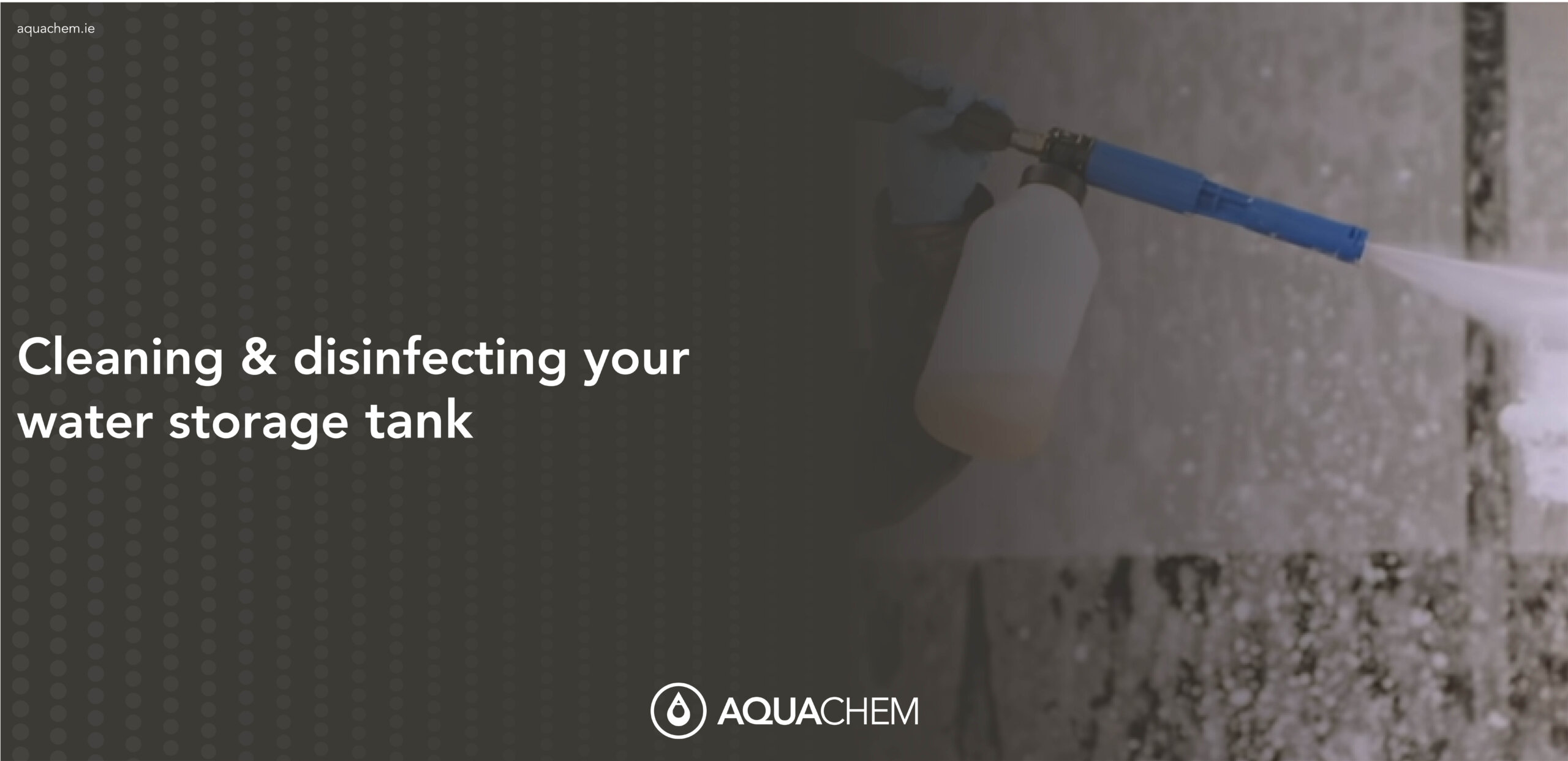Cleaning & disinfecting your water storage tank – Underrated but essential
To ensure you have the best quality water, safety precautions need to take place even when the water is not circulating within the system. Whether your premises has an underground or above ground water storage tank, regular cleaning and disinfecting of water storage tanks is essential to ensure the water inside stays clean and bacteria-free.
Overtime the tanks will acquire algae, sediments, silt, rust, and other contaminants which provide a breeding ground for dangerous bacteria such as E.Coli & Legionella.
The cleaning and disinfection should be on a regular basis, ideally at least once a year to guarantee that top quality water is being provided.
In this blog we will go through why regular cleaning is required and some of the hazards that come with it.

Why you need regular cleaning?
Microbial Contamination
In order to minimise the risk from Legionella and other forms of bacteria, cleaning your water tank regularly is very important and it is required to remove the potential danger.
Bacteria growth, particularly Legionella, can be a byproduct of stagnant water, as cold water storage tanks do exactly that (store water) a certain level of stagnation will always occur in them.
Cold water storage tanks are also highly susceptible to rust, sediment and limescale which is the bacteria that feeds Legionella bacteria, creating the perfect environment for Legionella to thrive. Not only does can this build up cause health issues it can also cause blockages and filter damage
Regular water tank cleaning is the most effective measure in combating stagnant water, however, this should be used in conjunction with other preventative measures such as using the cold water storage tank regularly, regularly maintaining the rest of your water system and ensuring the water storage tank is not too large for the building.
Rust
Just like many other pieces of equipment, the parts and fixtures of a water storage water tank can rust over time. Just like the limescale and other bacteria that grows in cold water storage tanks, the rust caused by worn parts can also provide a source of nutrition for Legionella bacteria to thrive. When this occurs, cold water storage tank refurbishment can help.
Sludge
Solids that have entered the tank will eventually get broken down and settle on the bottom of the tank, after a period of time these solid will reduce to sludge. If not cleaned, this can impact the quality of contents in the tank and clog pipes and filters. The passing of solids in turn affects the operations of plants, vehicles, and boilers.
Internal Moisture Build-up
Over time this can cause your tank to corrode from the inside out leading to tank damage and seepage. Moisture can also have a detrimental effect on the contents of your tank and cause multiple problems.

Hazards and Challenges
While the tank cleaning procedure may appear to be very fairly simple;
- Step 1 – Inspection & Preparation
- Step 2 – Drain the Tank
- Step 3 – Clean & Disinfect the Tank
Manually clean the internal surface of the tank using a scrubbing brush or similar abrasive tool. Any signs of damage, corrosion, scale, flaking, black spotting, and deficiencies should be noted.
- Step 4 – Recommission & Refill the Tank
Tank cleaning and maintenance crews should be fully qualified and highly trained experts due to the dangers posed by the task.
Microbiological
When water or sludge is present in the bottom of a tank allergic reactions and infections from contact or inhalation are a high risk.
Physical Hazards
If an accurate risk assessment is not carried out by an expert, issues can be encountered including objects falling, tripping, slippery surface, head injuries etc.
Emissions
Emissions to both air and water can be dangerous depending on the toxicity of the chemical inside. Gas and flammable liquid released into the air and any emissions to water or the ground presents a significant environmental concern. Regulations must be strictly adhered to in this situation.
The regular, scheduled cleaning and disinfection of industrial storage tanks is vital to ensure a clean and safe work environment and is needed to protect the integrity of the contents inside.
Dirty and poorly maintained water systems and neglected water tanks lead to a significant deterioration in water quality standards.
Storage water tanks are a potential breeding ground for unwanted and harmful bacteria due to the water stagnation which can be caused by a number of factors including under-utilising water or using an excessively large tank.
If you are responsible for the supply of water at a premises where a water storage tank is present you must ensure a an adequate cleaning & disinfecting plan is in place.
You can contact us on +353 18 252 775 or info@AquaChem.ie for information on our cleaning & disinfecting services.







